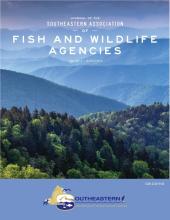Spotted Bass Population Structure and Diet in Wadeable and Non-wadeable Streams Draining the Lake Pontchartrain Basin
Spotted bass (Micropterus punctulatus) provide popular recreational fisheries in southeastern U.S. streams. We studied spotted bass population structure and diet from wadeable (< 1 m deep on average, n = 174, 21 sites) and non-wadeable (n = 498, 32 sites) reaches of the Lake Pontchartrain Basin in Mississippi and Louisiana to determine if populations should be managed separately by stream size. Sampling occurred April-November 2009-2012 by hook-and-line angling, boat-mounted electrofishing, and seines. Size structure was similar between stream type and with few quality-sized fish (PSD...
